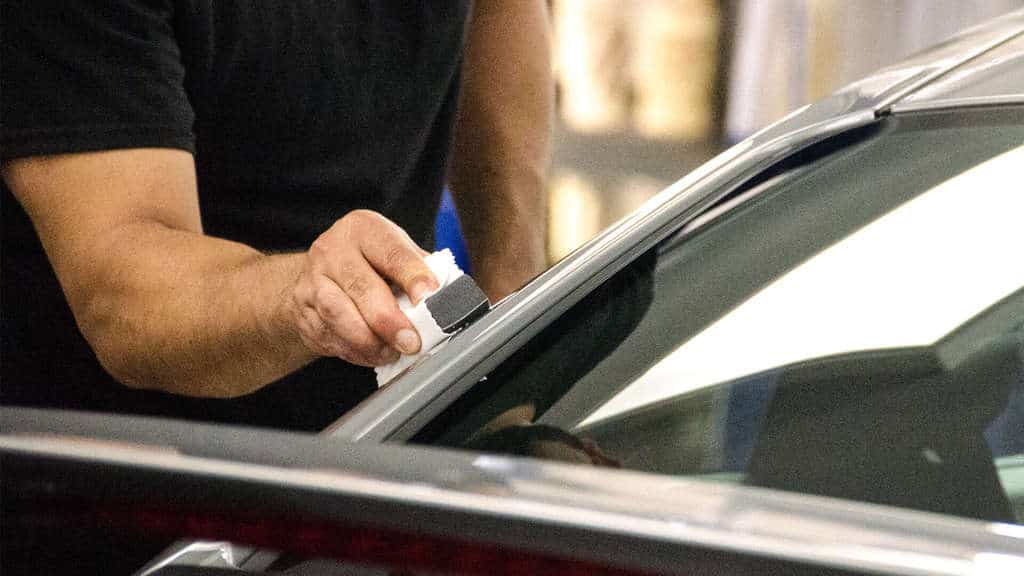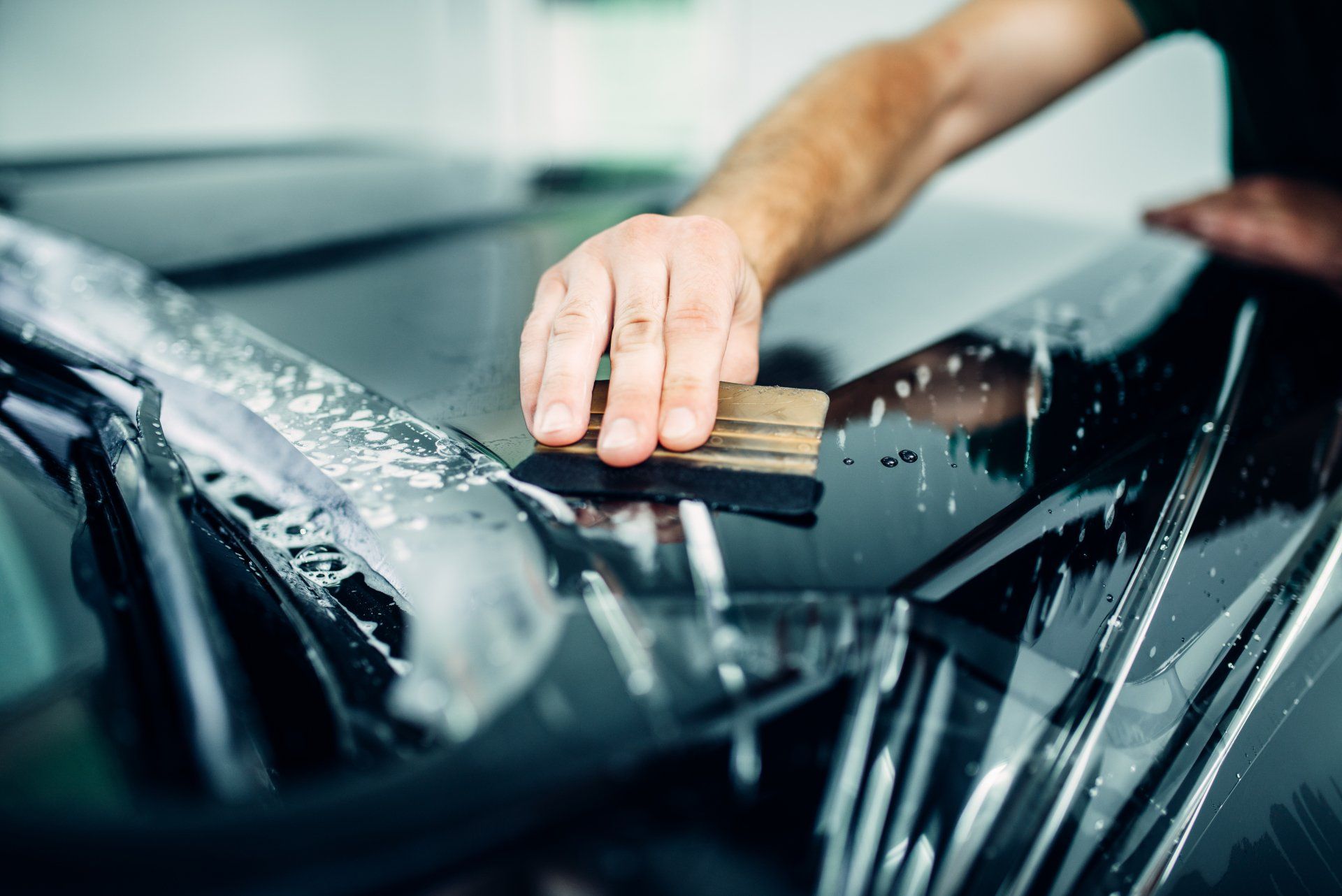Why Ceramic Coating Is Essential for Maintaining Your Car’s Paint
Why Ceramic Coating Is Essential for Maintaining Your Car’s Paint
Blog Article
Ceramic Layer vs. Standard Wax: Which Provides Better Long-Term Protection?
The discussion between ceramic finishings and typical wax for lorry defense has garnered substantial attention amongst vehicle enthusiasts and experts alike. While both offer the function of safeguarding paint, their distinctions in toughness, application, and long-lasting maintenance expenses may affect a customer's choice. Ceramic coverings flaunt premium longevity and resistance to environmental factors, yet the intricacy of their application questions about access and usefulness. As we check out these contrasting options, it comes to be vital to take into consideration not only the immediate benefits however additionally the implications for car treatment over time.
Summary of Ceramic Finishing
Ceramic finishing has obtained considerable popularity among vehicle lovers and detailers alike due to its advanced safety qualities. This ingenious modern technology is created to develop a long lasting, hydrophobic shield over an automobile's paint surface, significantly improving its resistance to environmental impurities such as dirt, UV rays, and chemical stains. Unlike conventional wax, which gives a short-lived layer of security, ceramic layers bond at a molecular level with the paint, providing lasting toughness-- usually extending beyond 2 years with proper maintenance.
The application process involves precise preparation of the lorry's surface, including cleaning and brightening to make sure optimum bond. Once applied, the coating remedies to develop a durable layer that not just includes depth and gloss to the paint but additionally simplifies maintenance. With its hydrophobic residential or commercial properties, ceramic layer enables water and dust to slide off even more quickly, decreasing the regularity of cleans and decreasing the risk of swirl marks.
Furthermore, ceramic coatings are readily available in various formulations, permitting users to choose items customized to their specific demands and preferences. In general, ceramic finishing stands for a substantial advancement in paint defense technology, delivering superior performance contrasted to standard choices.
Introduction of Traditional Wax
Typically considered as a staple in vehicle care, wax acts as a preferred choice for those seeking a straightforward method to improve and safeguard their vehicle's paint - ceramic coating. Automotive wax usually comprises all-natural components, such as carnauba, or artificial compounds, created to create a protective layer on the surface area of the paint. This layer not only boosts the car's gloss and shine but also supplies a barrier against environmental impurities
The application of wax is generally easy to use, making it accessible for both specialists and Do it yourself fanatics. Once applied, wax calls for a treating duration, after which it hardens to develop a protective shell.
Nevertheless, while wax is efficient for boosting the aesthetic allure of a lorry, it is very important to keep in mind that the protection it uses might necessitate much more constant reapplication compared to alternate products, such as ceramic finishes. Overall, conventional wax continues to be a favored option for those prioritizing simplicity of usage and prompt aesthetic improvement.
Toughness and Long Life Comparison
While both ceramic coatings and typical wax offer safety benefits for vehicle paint, their toughness and longevity differ dramatically. Traditional wax, usually made from natural carnauba or artificial polymers, usually gives a protective layer that lasts roughly 3 to 6 months. This fairly brief life-span necessitates regular reapplication to maintain optimum protection.
On the other hand, ceramic finishings are crafted from advanced nanotechnology, forming a covalent bond with the paint surface area. This results in a robust, hydrophobic layer that can endure for two to 5 years, relying on the item and environmental conditions. The exceptional sturdiness of ceramic layers is connected to their chemical structure, which supplies enhanced resistance to scratches, UV rays, and oxidation.

Protection Versus Ecological Aspects
Safeguarding a lorry's paint from environmental aspects is important for maintaining its appearance and worth with time. Automobiles are frequently subjected to a variety of aspects, consisting of UV rays, bird droppings, tree sap, acid rain, and road crud, every one of which can endanger the integrity of the paintwork.
Ceramic layers offer a robust protection against these environmental assailants. Unlike standard wax, which can weaken rapidly under UV exposure, ceramic coatings develop a long lasting, hydrophobic layer that resists the damaging results of sunlight and ecological pollutants. This advanced modern technology develops a chemical bond with the lorry's surface, offering superior security that lasts for several years, also in extreme problems.
In comparison, ceramic coatings keep their safety high qualities longer, significantly reducing the threat of paint damage and guaranteeing that the vehicle retains its visual appeal. As a result, ceramic finishings are progressively recognized as the remarkable selection for long-lasting protection versus environmental variables.
Application and Maintenance Differences
The approaches of application and subsequent upkeep for ceramic finishes and typical wax differ significantly, influencing the click resources general customer experience and efficiency of each product. Ceramic coatings need an even more intricate application process, generally involving surface prep work that consists of cleaning, decontaminating, and polishing the lorry. Once the surface is all set, the ceramic finish is applied in a regulated environment, commonly requiring professional experience to make sure appropriate healing and bonding to the paint.

While both products enhance vehicle look, the longer-lasting protection provided by ceramic finishes may justify their initial investment, despite the more demanding application process. Conversely, traditional wax remains a popular choice for those seeking a less complex, albeit temporary, remedy.

Final Thought
Finally, ceramic coatings show substantial benefits over traditional wax in terms of sturdiness and environmental protection. With a lifespan expanding 2 to 5 years and remarkable resistance to UV rays, dust, and chemical spots, ceramic coatings offer an extra reliable option for long-term vehicle upkeep. Although the application procedure might call for expert competence, the resulting price financial savings and reduced regularity of reapplication emphasize the worth of ceramic layers for those looking for ideal car security.
The debate in between ceramic finishings and standard wax for lorry protection has actually gathered significant attention among automobile lovers and experts alike. Unlike typical wax, which offers a momentary layer of defense, ceramic finishings bond at a molecular level with the paint, using long-lasting longevity-- commonly prolonging beyond two years with appropriate maintenance.
While both ceramic finishes and traditional wax deal safety advantages for automotive paint, their resilience and durability differ significantly. For vehicle fanatics looking for lasting security, ceramic coverings present an engaging advantage over traditional wax products.
In final thought, ceramic coverings demonstrate considerable benefits over traditional wax in terms of toughness and environmental protection.
Report this page